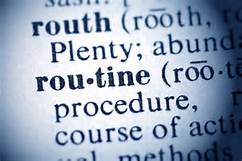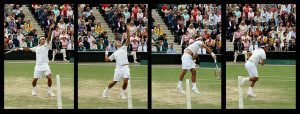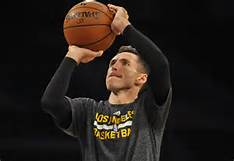Great athletes want to perform consistently every time they compete. However, the ability to perform consistently is easier said than done – your “A-Game” can be here today and gone tomorrow! Spotty performance can be frustrating to say the least.
Routine practice of physical skills and techniques such as throwing a fast ball or making a jump shot helps your body to develop muscle memory, creating a physiological blueprint of what you have trained your body to do. Why is it that we routinize our physical skills, yet most athletes fail to establish and practice mental routines? Establishing – and practicing – a mental routine is equally as important for consistent performance.
Creating a mental routine is a strategy that will pay off with greater consistency in training and in competition. The mind controls the body, and a well-established mental routine allows you to adjust to the changing conditions that are inherent in competition. When you don’t have a mental routine or when you don’t stick to your mental routine, what your mind does is left up to chance and ultimately your performance suffers.
What is a mental routine? A mental routine is similar to a physical routine. It’s a procedure for what your mind does when you want to perform a skill or technique consistently. Regular practice of a mental routine results in an automatic execution of the skill. Steve Nash, the NBA’s all-time free throw percentage leader with a 90% career free throw percentage, had not only a physical routine, but also a mental routine every time he went to the free throw line. Mentally, Nash would imagine making the free throw, and physically he would practice the shooting motion that would result in the shot going in. By routinizing all aspects of the free throw he was able to consistently make free throws – regardless of what was going on in the game.
A good mental routine is comprised of four components; follow the steps below to build a good mental routine of your own. Practice your routine by following these four steps every time the skill is performed, in training and competition:
1. Envision your success. About to hit a serve? Mentally rehearse where you want the ball to land. On the free throw line? Imagine the ball hitting the backboard and going in. The point here– before you make the attempt – is to envision yourself successfully executing the skill exactly like you have done many times before.
2. Use a mental cue to action. A mental cue is your brain’s call to action. A mental cue can be verbal: something that you say to yourself, like “aim small, miss small”. A mental cue can also be visual: a designated focal point for example, where you direct your attention. A mental cue can also be kinesthetic, like a basketball player practicing his free throw shooting motion before he has the ball in his hand – this is a kinesthetic cue. It is important for athletes to incorporate mental cues to action into their performance routines.
3. Control breathing. In most sports, athletes are expected to perform both fine and gross motor skills, but, each requires different levels of physiological activation i.e. heart rate, breathing. The rate of breathing required for a skill like sprinting down the court, for example, is quite different than the rate of breathing required to make two free throws. When an athlete has to shift from gross motor skills to fine motor skills – like a basketball player who has just sprinted to get open, taken a hard foul, and is now at the free throw line – taking a few deep, deliberate breaths serves to lower the athlete’s level of physiological activation, increasing muscular control and the likelihood of success.
4. Recite your impact statement. Create an impact statement and practice using it to cultivate confidence in your ability in the present moment. When practiced, impact statements are a powerful tool to train the brain to think effectively in the moment, when it counts the most. Here are a few great examples of impact statements: “When I play with the most heart, I set myself apart”; “My serve is my weapon”; “I can do anything I set my mind to”. Make your impact statements present tense, personal, powerful and positive. Remember – you get what your mind sets!
If you want to perform at your potential do yourself a favor and start to incorporate mental routines into your physical training today. When you practice your mental and physical routines you begin to build mental muscle memory, allowing you to execute skills automatically, and achieve success consistently, not only when circumstances are ideal, but also when you’re faced with competitive adversity.
To see a great example of a mental routine at work, watch a video clip of NBA all-time free throw percentage leader Steve Nash. Check him out at: http://www.youtube.com/watch?v=Nncd3L0S0RU
Stephany C. Coakley, PhD, LPC, CC-AASP
Director/Founder – Maximum Mental Training Associates (MMTA) LLC
Mental Strength and Conditioning Coach


